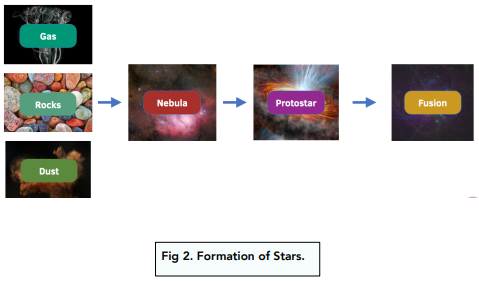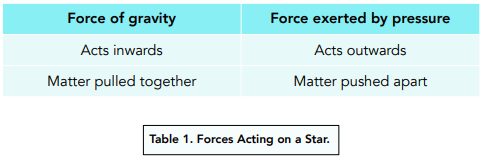Formation of Stars (GCSE Physics)
Formation of Stars
Formation of Stars
When you look at the sky, you can see many ‘stars’. There are billions of stars in the solar system, and one of them is the sun.
You need to understand the simple stages in the development of a star:
- The star begins as a ‘nebula’. At the start of a star’s life cycle, a nebula will be formed. This is simply a cloud of gas, rock and dust. When this cloud is drawn together by gravity, it is called a protostar.
- Fusion reactions occur within the star. As the protostar forms, its core will undergo fusion reactions. Gravity is the attractive force that causes these fusion reactions.

- The Sun is a big star at the centre of our Solar System. The Sun was formed through this same process. It started off as a nebula, which was pulled together by gravitational attraction to form a protostar.
Fusion Reactions
As we mentioned previously, fusion reactions occur. When these reactions occur in the core of the protostar, lots of energy is released. Here are the steps involved:
- Energy release makes the protostar hot. As energy gets released in the core of the protostar, it warmer. The core begins to get hot and bright, creating a star.
- The heat generated will form helium. Using the heat generated in the fusion reactions, the hydrogen nuclei in the core will fuse to form helium nuclei. These fusion reactions will give out lots more energy, allowing more helium nuclei to be formed.
- Two important forces are acting on the star. During this process of fusion, there are two important forces that act on the star. These two forces balance each other out, so that the star is in equilibrium. The star is now called a main sequence star.
- Force of gravity – this force pulls the matter of the star inwards, called gravitational collapse.
- Force exerted by pressure – this force pushes the matter of the star outwards, called the expansion of the star due to fusion energy.






Still got a question? Leave a comment
Leave a comment